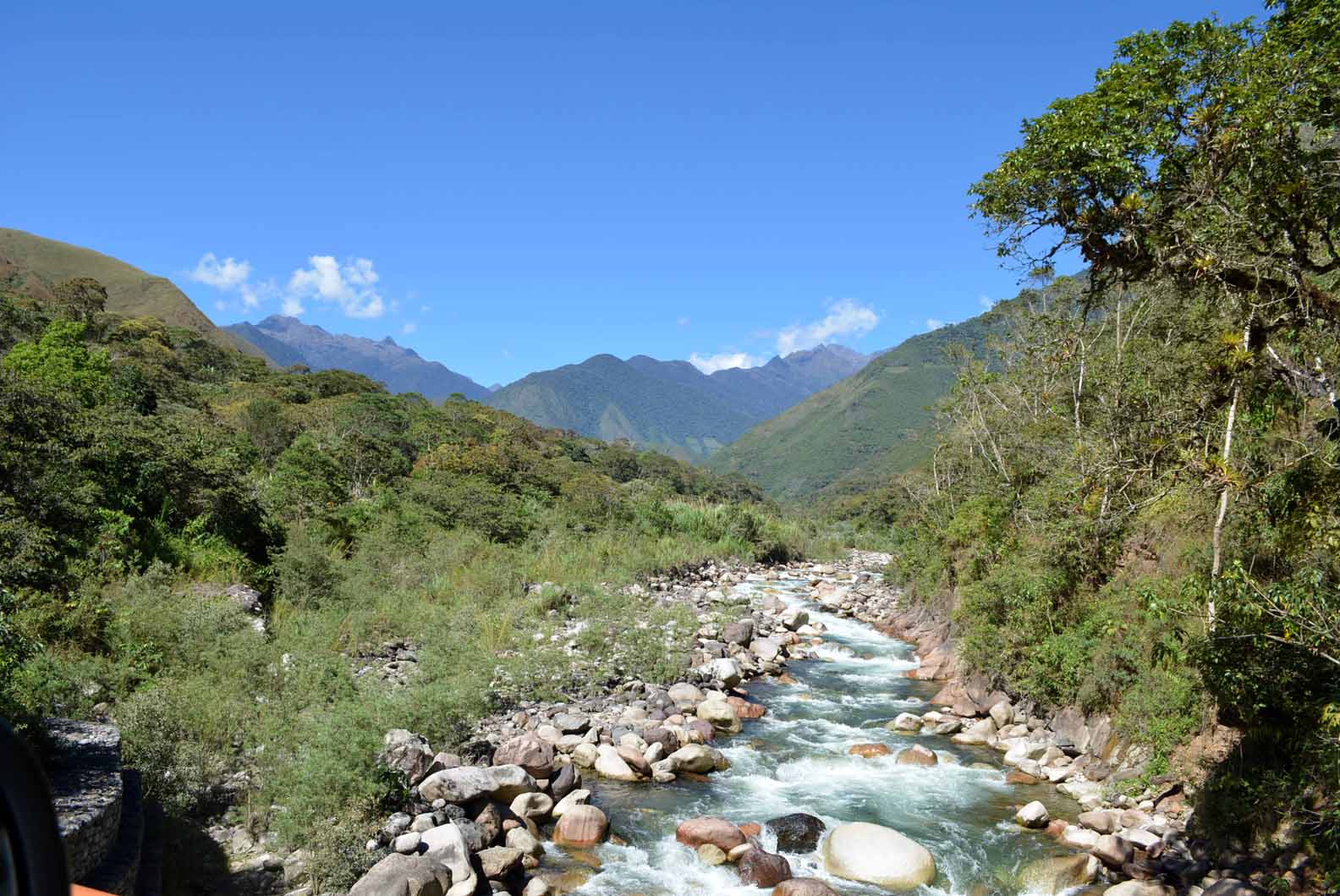This post is about the second in a series of workshops for the growers in the Curibamba Coffee Project held June 27-28. For more info, see below for other links.
Prologue
After our visit to FInca El Dorado (see here,) we continued on to San Ramon. The day was late, and we barely made it before dark. Exhausted after so many days of traveling & all things coffee, we check into a new hostal to see how it will be. It’s priced right, and the internet seems to work, so we may have new digs for our trips to San Ramon. (Hostal Santa Domingo – S/.40 per night about $12.63 at this time.)
We dash off an email to Miguel from Edegel who will give us the details for the next two days of workshops for the growers in the Curibamba Coffee Project. We grab a quick sandwich & some papaya juice, and call it a night.
Day #1 – Rainy Morning, with Mudslide
Our driver (Sr. Canales) arrives early as usual, and we’re happy to see him again. We grab a quick breakfast, and off we go to Los Angeles (also known in Quechua as Chimày,) the site of the first workshop today.
After several weeks of finally dry weather, overnight there have been torrential rains, and on the way we encounter a mudslide that has completely blocked the road.
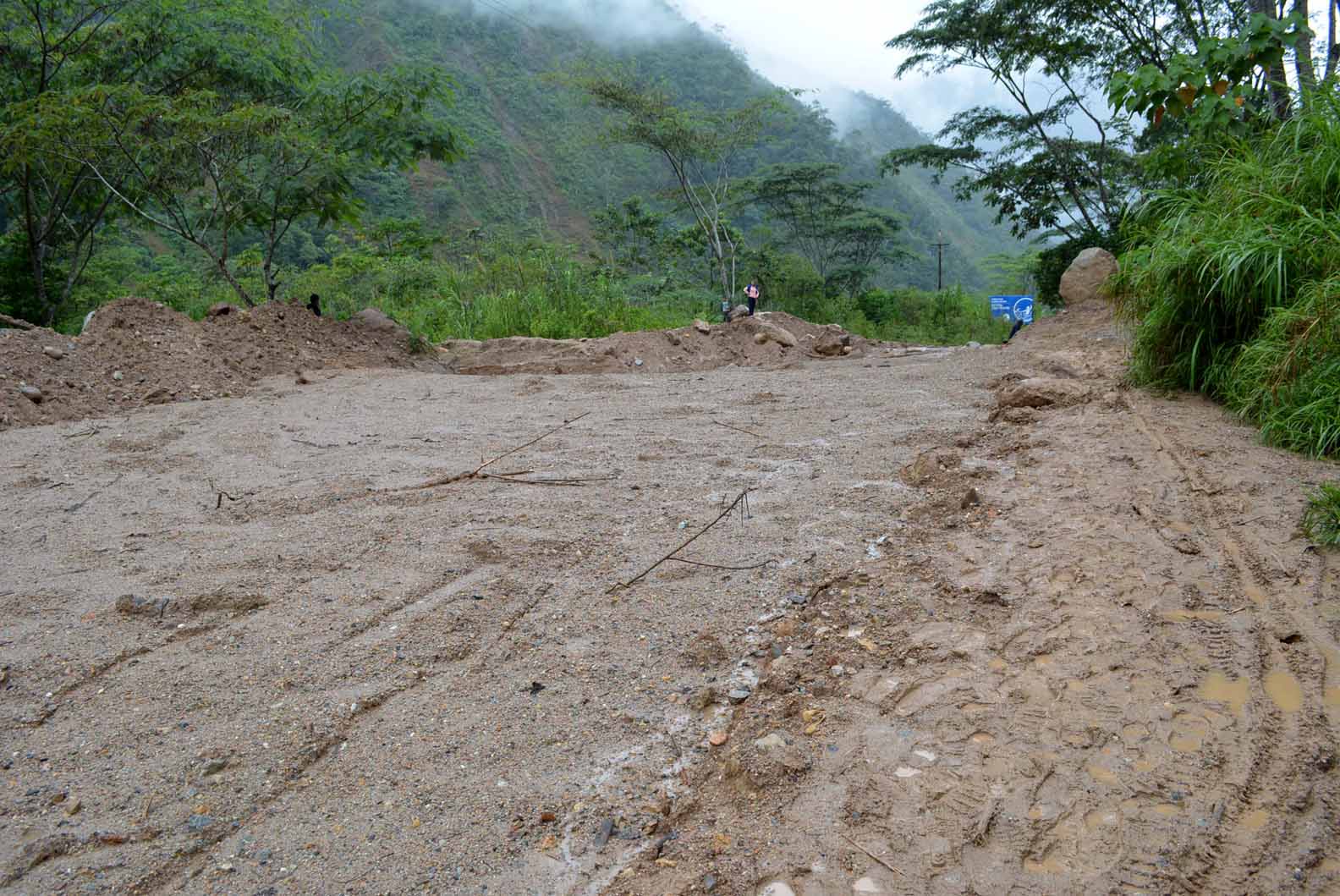
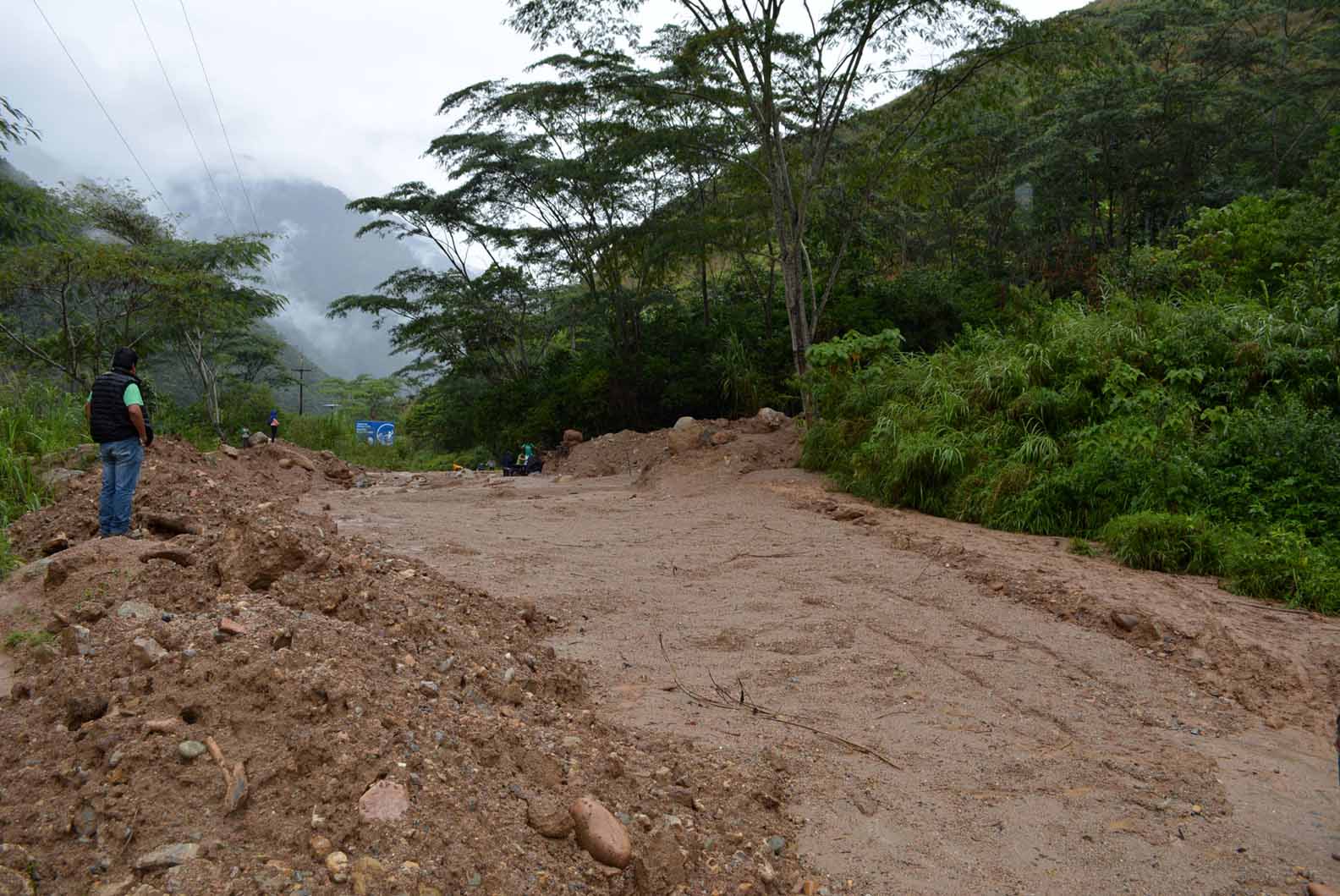
We speak with a few of the other folks waiting along the road and find that a grader has been called to open up the road. It’s Saturday, and it’s still raining. The road crew quits at noon, and there won’t be another until Monday. Another mudslide & we’re stranded.
Should we go? Messages fly back and forth, and it’s decided to just wait and bravely forge ahead. Meanwhile, the rain does begin to let up, and the valley is shrouded in mist, with an occasional bright spot shining through.
After about 45 minutes of milling around, and watching the line of cars increase from a half dozen to more than 20, the grader shows up & soon the road is open, although narrow and muddy.

Workshop – Los Angeles
We’re on our way, but now quite late for our scheduled 10:00 am workshop. Behind us, just leaving San Ramon now are David Bisetti of Lima, and Miguel from Edegel.
They made good time though, and as I wrapped up a brief talk to the growers on our Curibamba Coffee buyers in the US (along with some pictures,) the trucks arrived, and we began the flurry of preparations for the workshops.
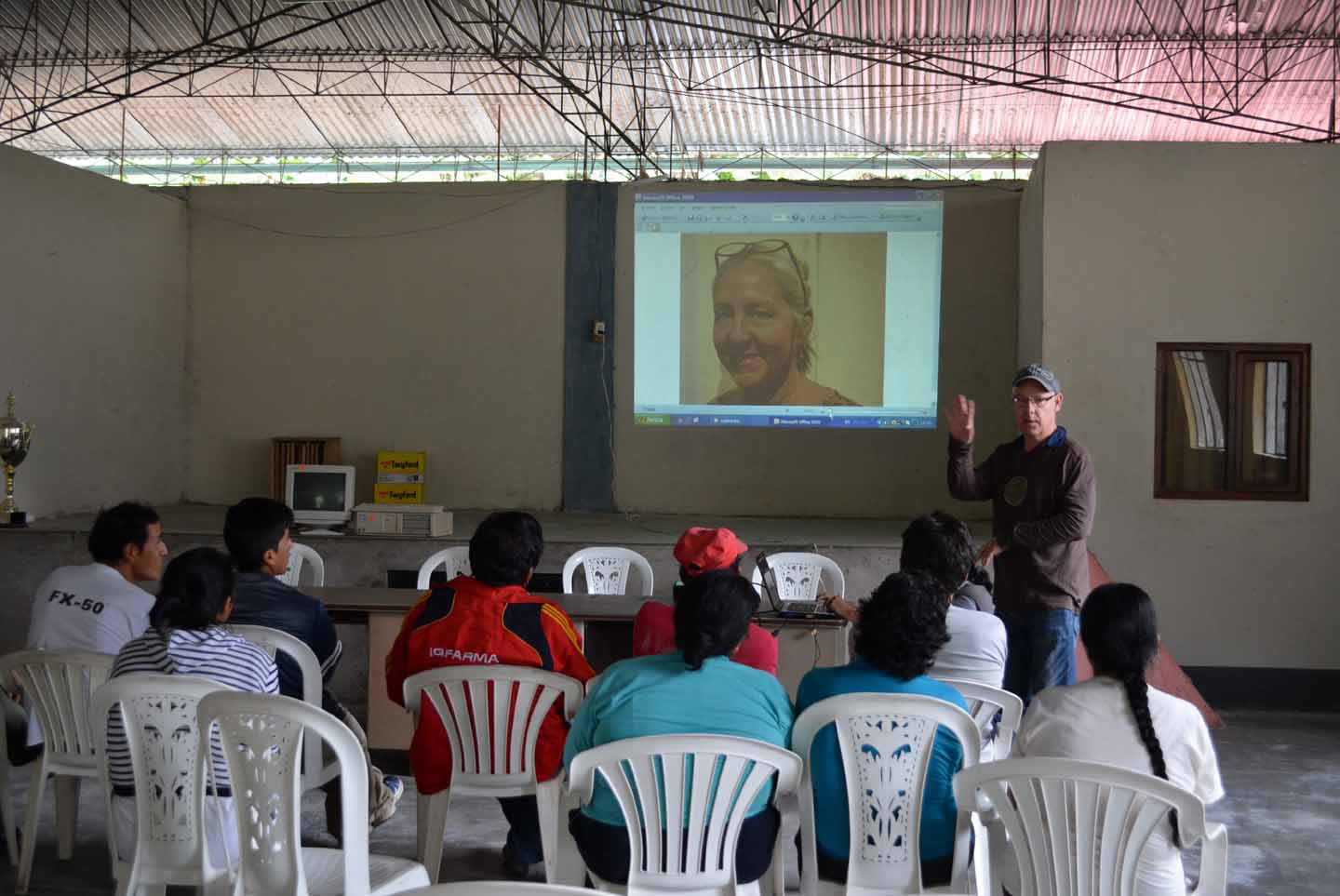
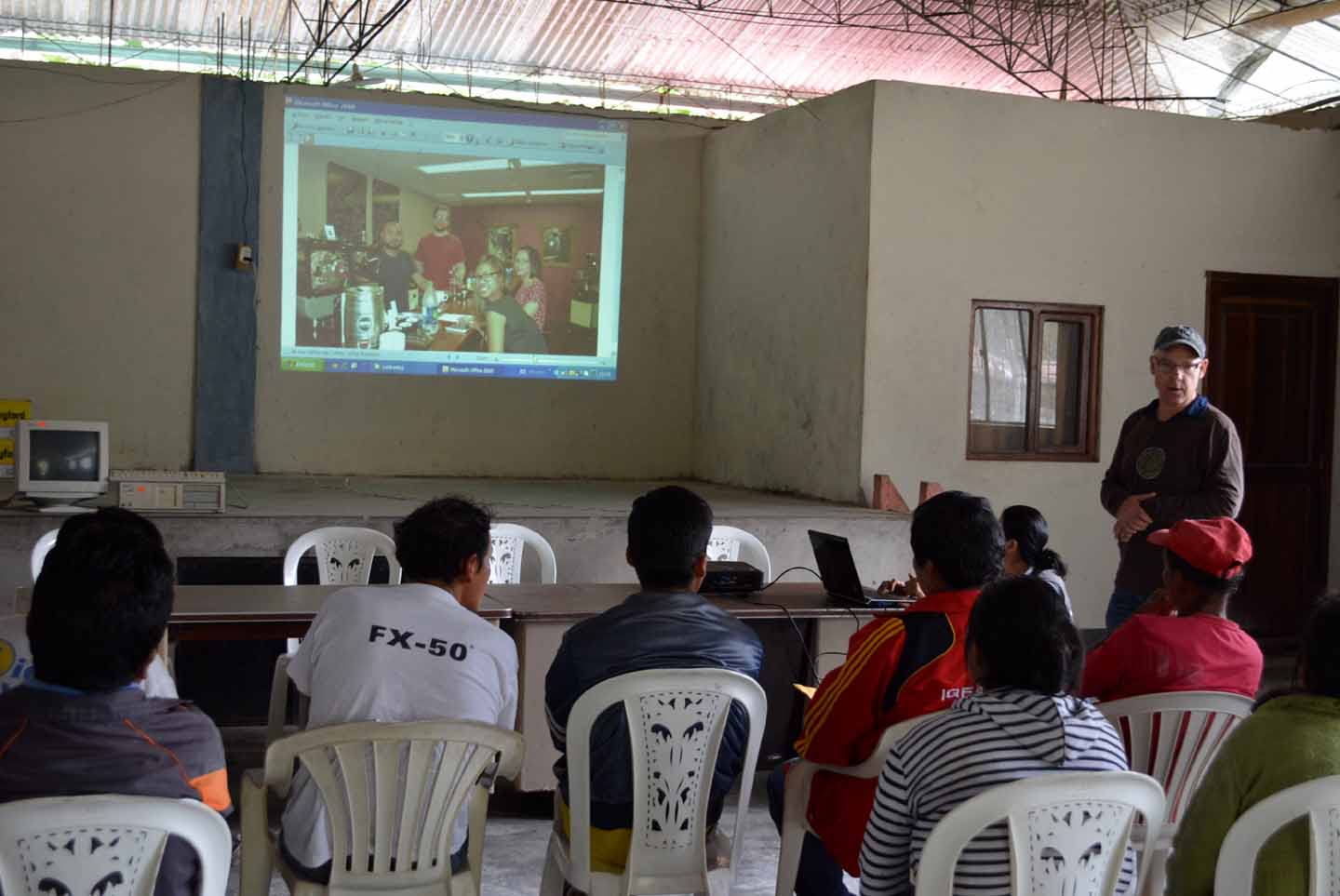
Todays workshops touch briefly on the basics of good harvesting, fermenting, and drying. From there we’ll be covering sensorial aspects of coffee and using some exercises to improve the palate, and finally using those techniques we will determine which of three coffees are different from the other two.
It’s an introduction to the subtleties of coffee flavor. Many of these growers have never even tasted their own coffee when it was properly roasted. Today, we will be using some of the Curibamba coffees that have tested well in the laboratory, and were roasted at Tostaduria Bisetti in Lima.
Flavor Exercise #1
We begin with an exercise. Each grower is given a paper with 9 different circles for 9 individual cups of a water solution. There are three different types of flavor: salty, sweet, and acidic. There are three levels: low, medium, and high. The task is to differentiate which are salty, sweet, and acidic, an then determine which level each one of them is.
The group seems to start off slowly, but soon everyone has begun sampling each solution.

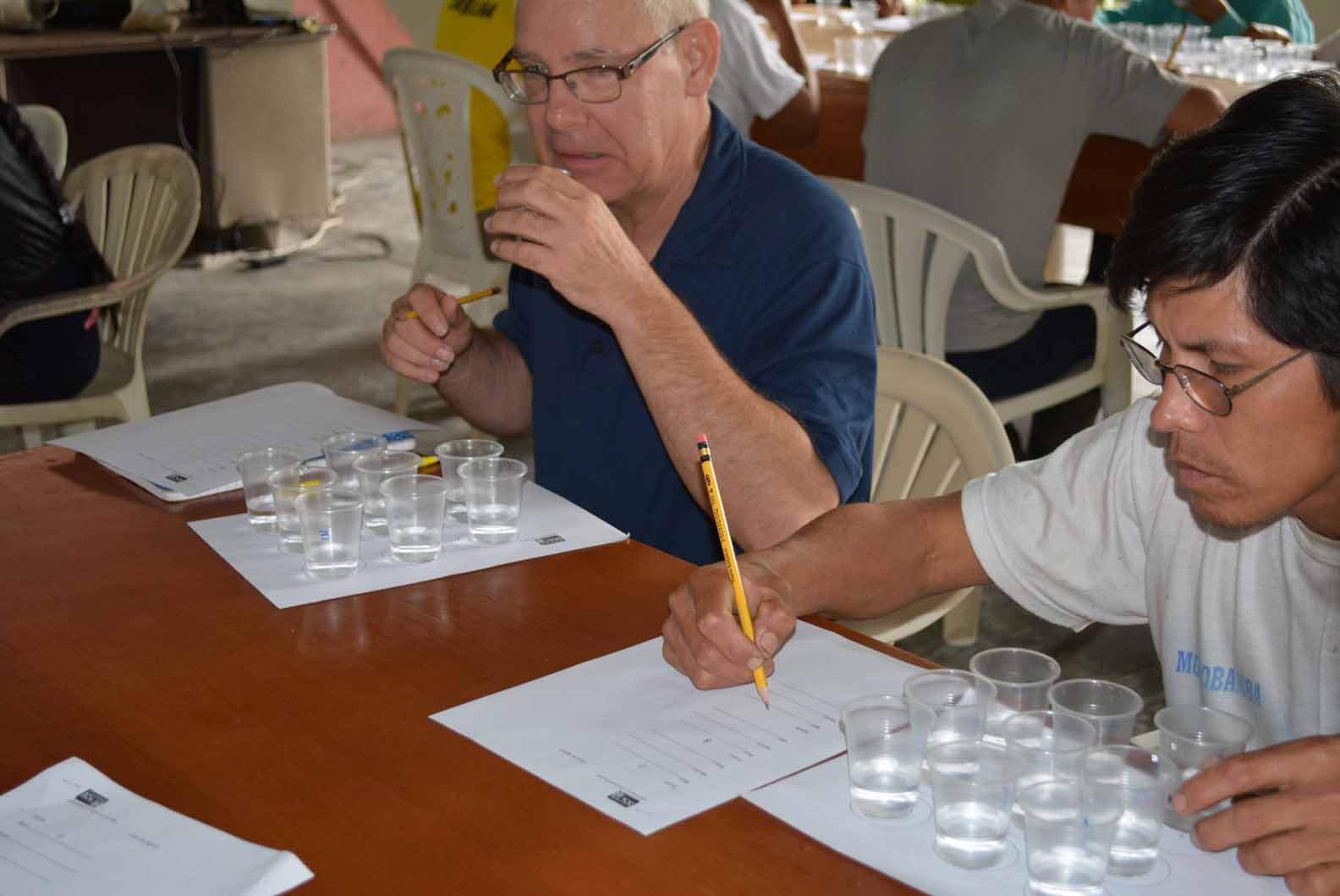
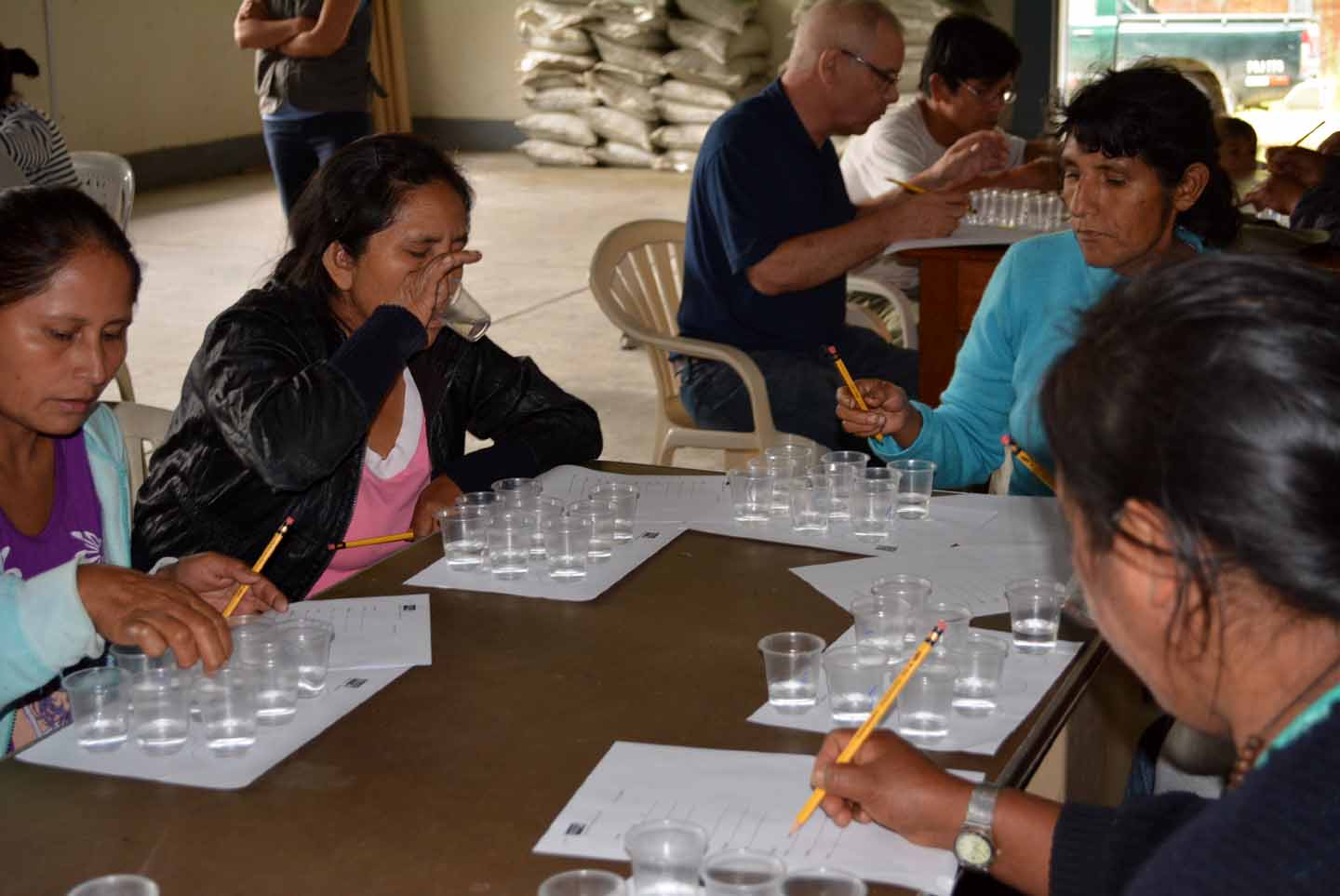
At the end, there are a few mistakes, but everyone does well. By comparing the solutions one more time, everyone agrees on all of the levels.
Flavor Exercise #2
Next, is a coffee flavor exercise. We’re given three small cups of coffee. Two of the coffees are the same, the third is different. Our job is to differentiate that third coffee.
Beyond telling which coffee is not the same as the others we are to carefully think of the flavors that we detect: is it acidic? If so is it a more citrus acidic, or more like apples? Is that a hint of nuttiness?
We discuss aroma, and the fact that the sense of smell is a much more primitive sense, and resides at a lower level than say the sense of taste which is a higher brain function. The secret is to try and describe those primordial sensations that one experiences in careful use of the olfactory nerve and the sense of smell. Letting the impressions come from deep inside.

We all compare notes, and learn the identity of the third coffee. In this case, although all coffees were excellent, one had a noticeably “brighter” acidity which was the giveaway. About half the class seemed to have it right.
There are some questions and answers, and shortly we’re already packing up as we’re late for the second workshop & still haven’t eaten anything.
Workshop #2 – Marancocha
After everything is loaded up, we head off to Marancocha, a small village on the other side of the Reservoir. It’s amazing scenery as we cross over the dam, and onto a narrow dirt road to make our way to the Plaza de Armas.
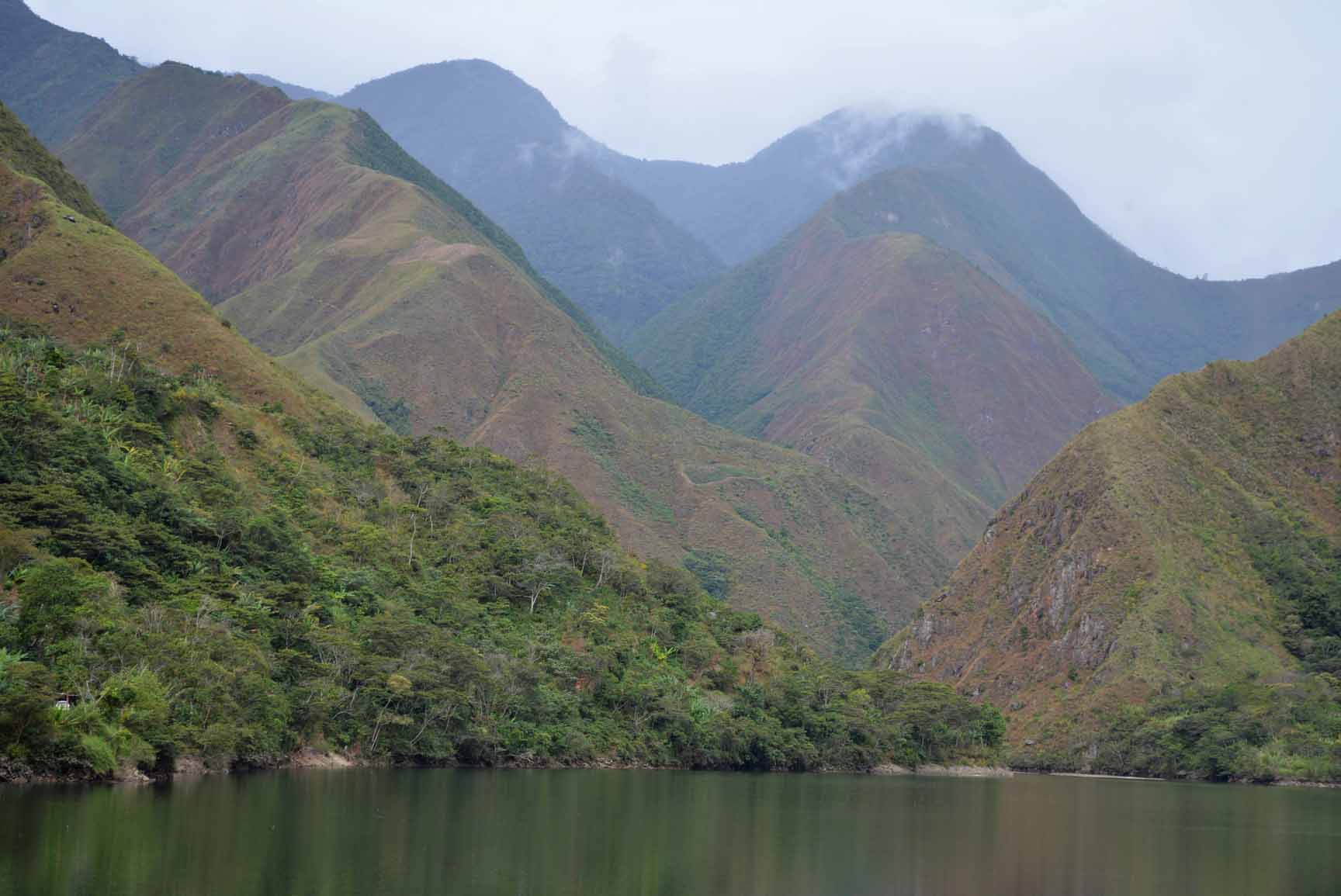

We arrived, but the person who had the keys to the community center was not in town, so we improvised in small restaurant. This workshop is a repeat of the morning, with an emphasis on developing the sense of taste. This group seems to enjoy the workshop & actively participates.
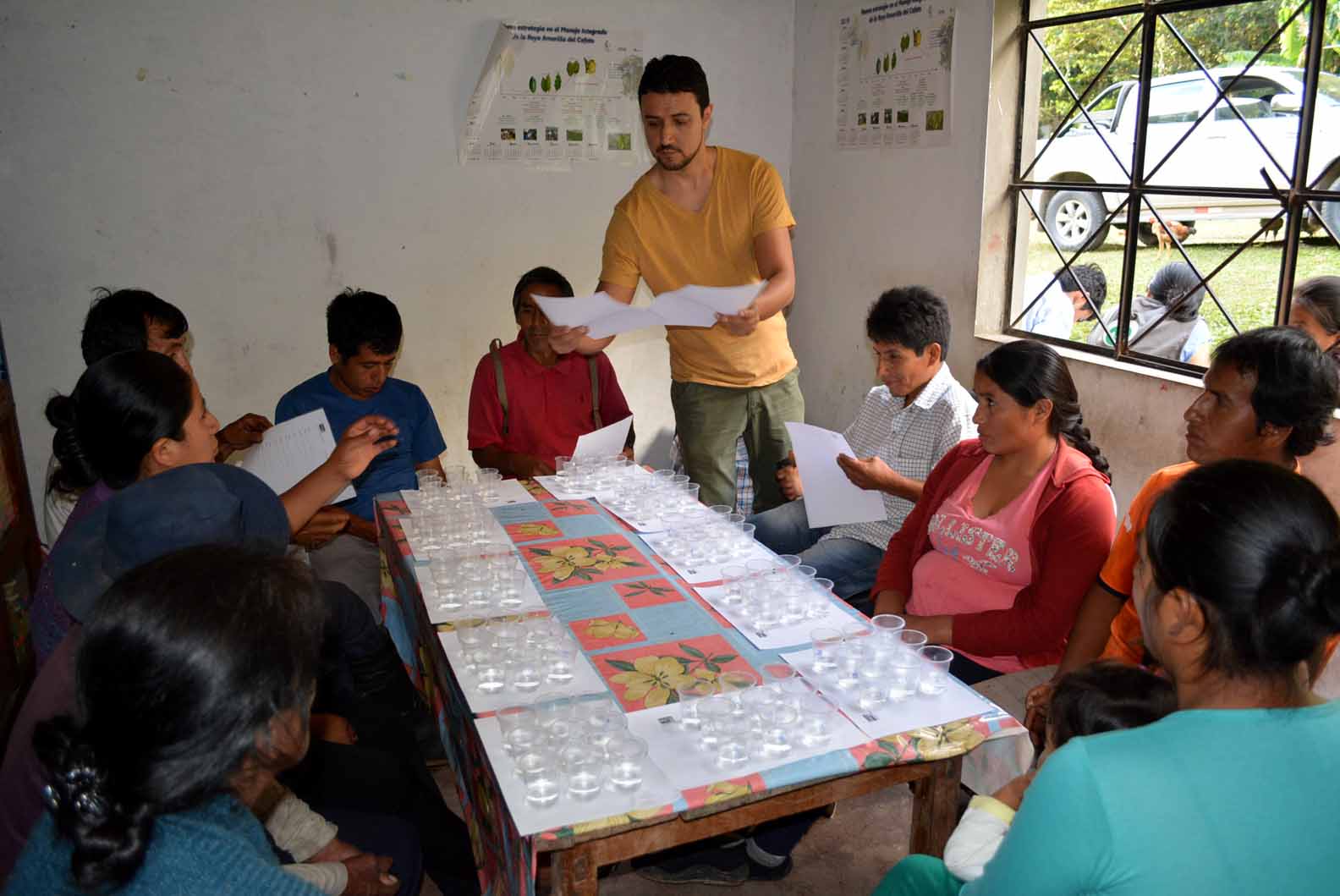
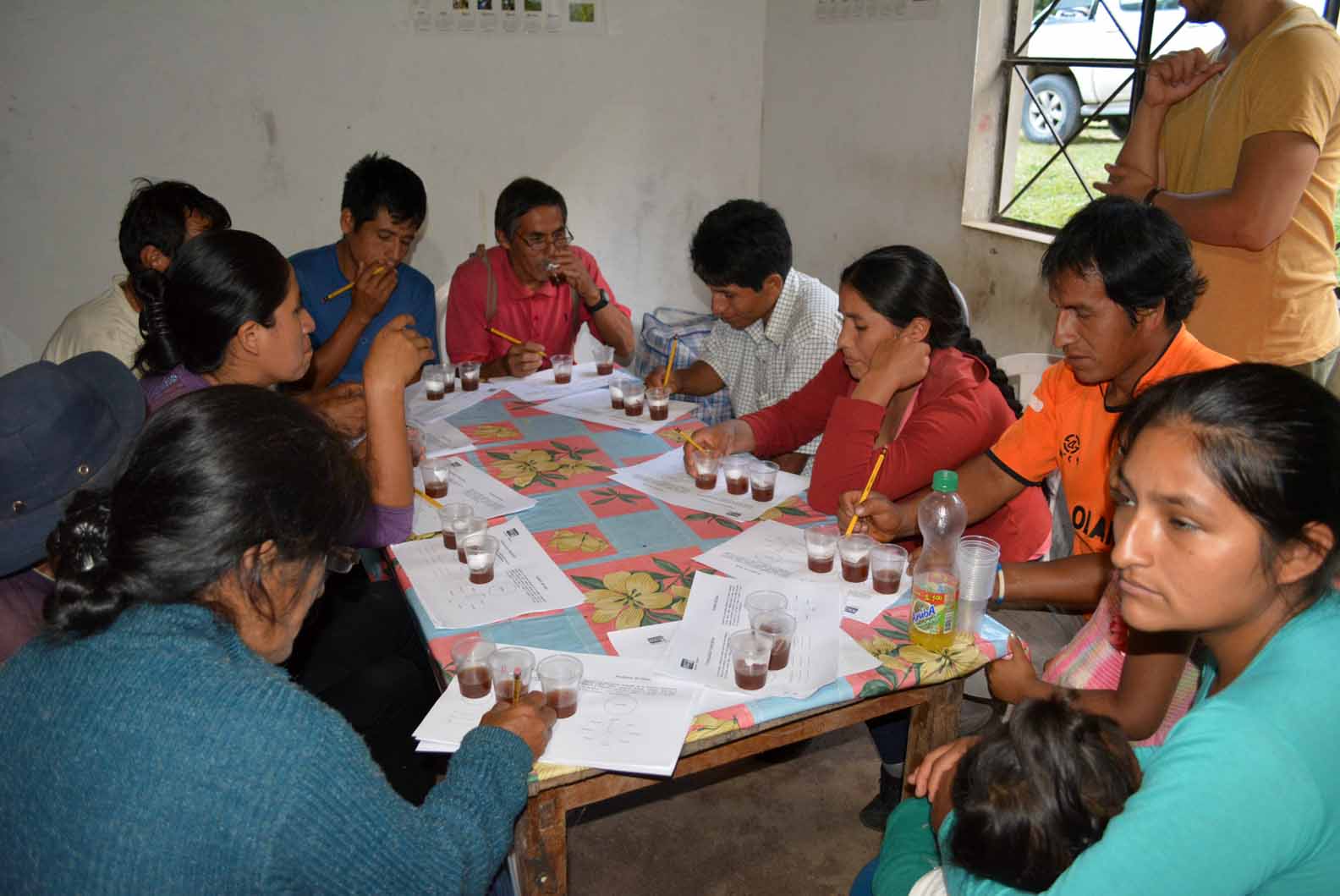
Day #2 Uchubamba and San Jose de Villano
We’re up early again, a little spacy after the late dinner (or was it the wine?) Once again our driver Sr. Canales picks us up in front of the Hostal Santa Domingo. Today is sunny and bright, and it hasn’t rained at all, so it portends to be a trouble free ride.

Uchubamba
We arrive in Uchubamba ahead of schedule, and start setting up for what will be the biggest workshop with 43+ participants.
Founded in 1572, Uchubamba has an historic past. This church bell tower is all that remains of the church (originally constructed in1619) after an earthquake struck the area in 1947. There was a fort built here during a rebellion in the 1740s. Nearby are some thermal baths. Rather unknown for such a fabulous area, rich in natural beauty & historic significance.

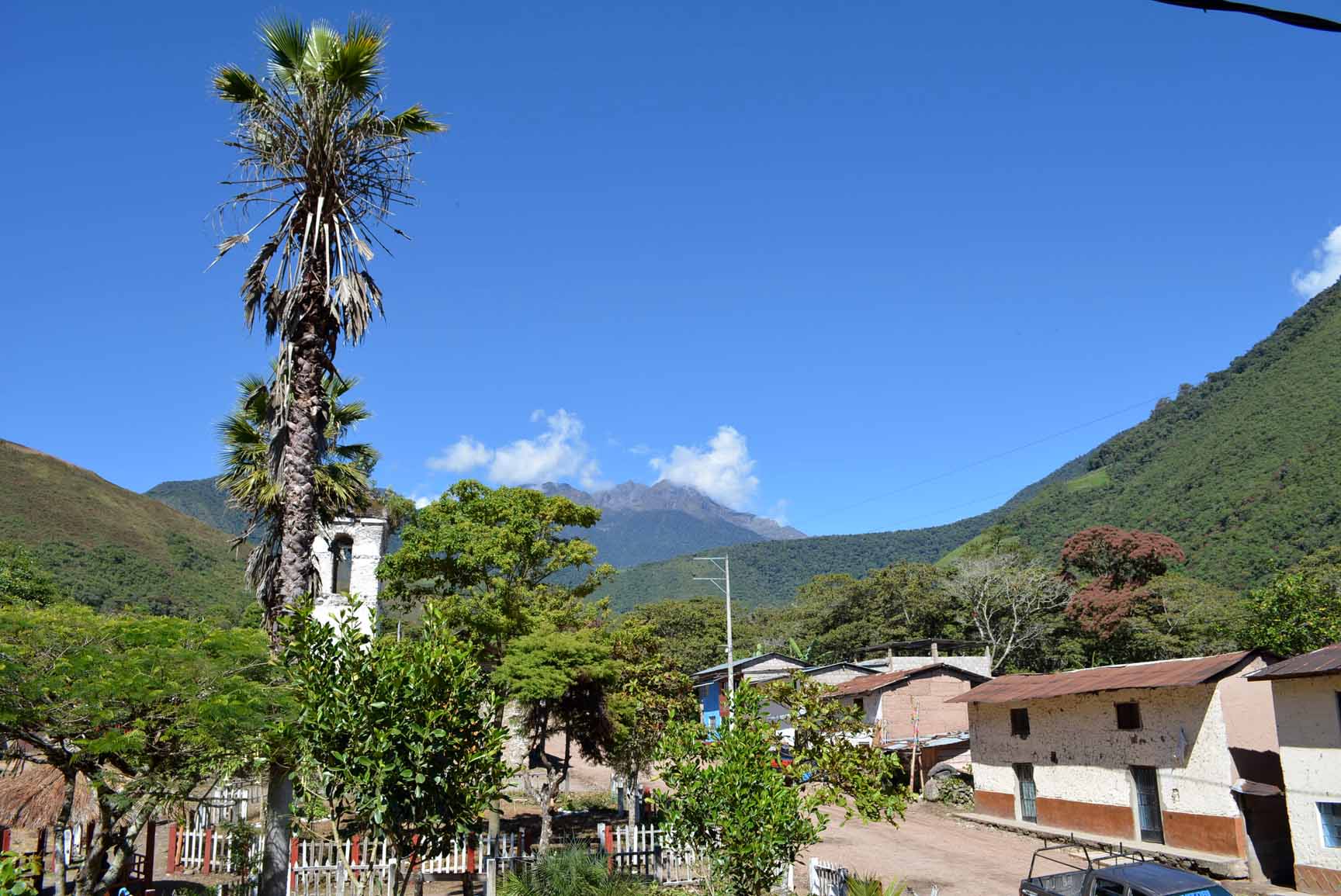
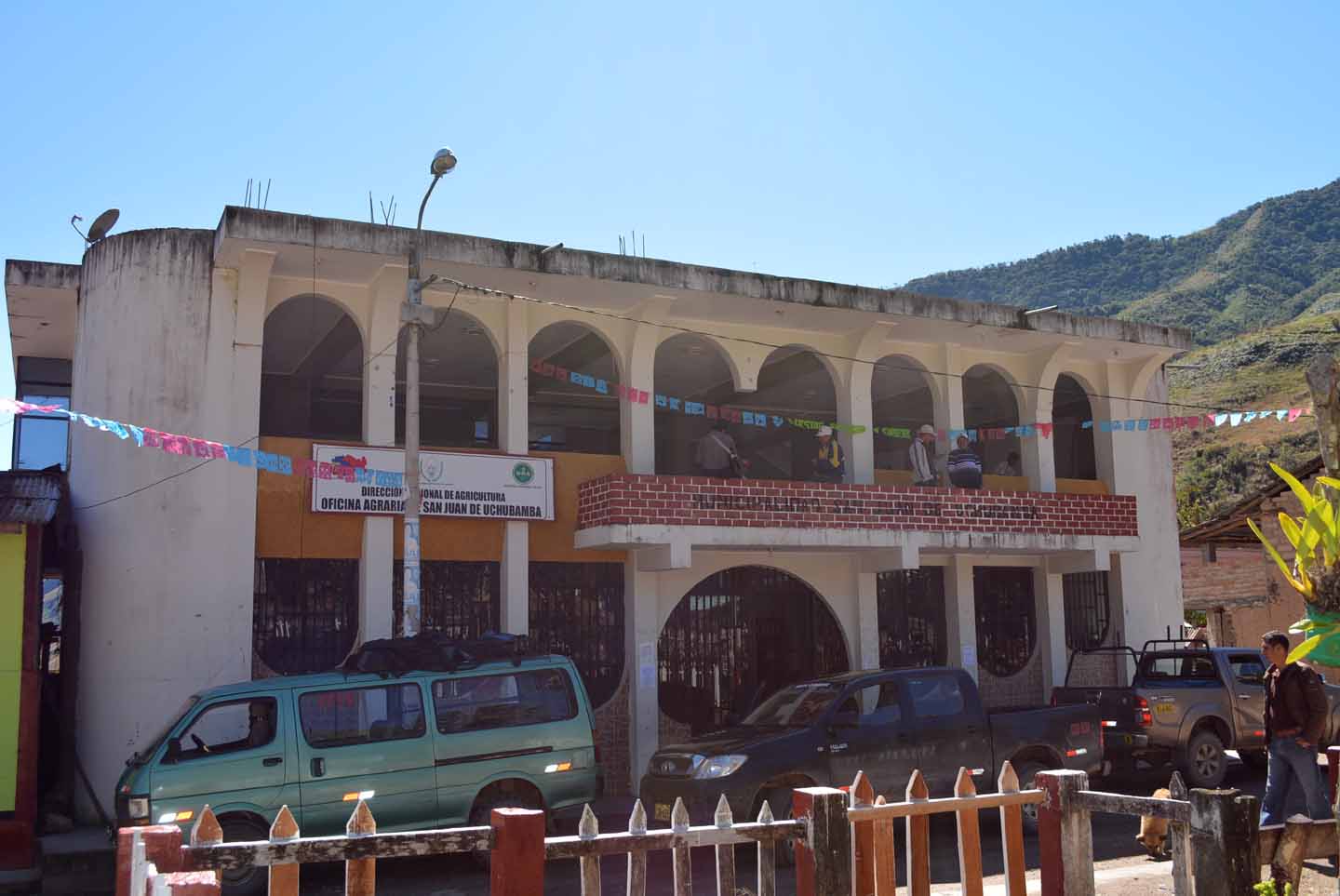
The growers start arriving and once again we prepare for the flavor course. All in all we’ll prepare 387 flavor samples (salty, sweet, and acidic,) and later 129 coffee samples for the second part of the course. Whew, it keeps us volunteers moving back in forth.

We next grab a quick lunch, and head to San Jose de Villano, which is a smaller village nearby for the last workshop this trip.

Before we leave, we take a look at several solar drying coffee “tents.” The Curibamba Coffee Project has been providing support to the growers in the form of organic fertilizers, technical advice via the agricultural engineers from AVSI, and coffee drying tents for proper drying of the coffee beans.
Many growers are still drying their coffee on tarps, and the advantage to “tent” drying is to get the coffee onto drying tables, off of the ground which avoids possible contamination by exposure to humid soil, animals, insects, and/or rain.
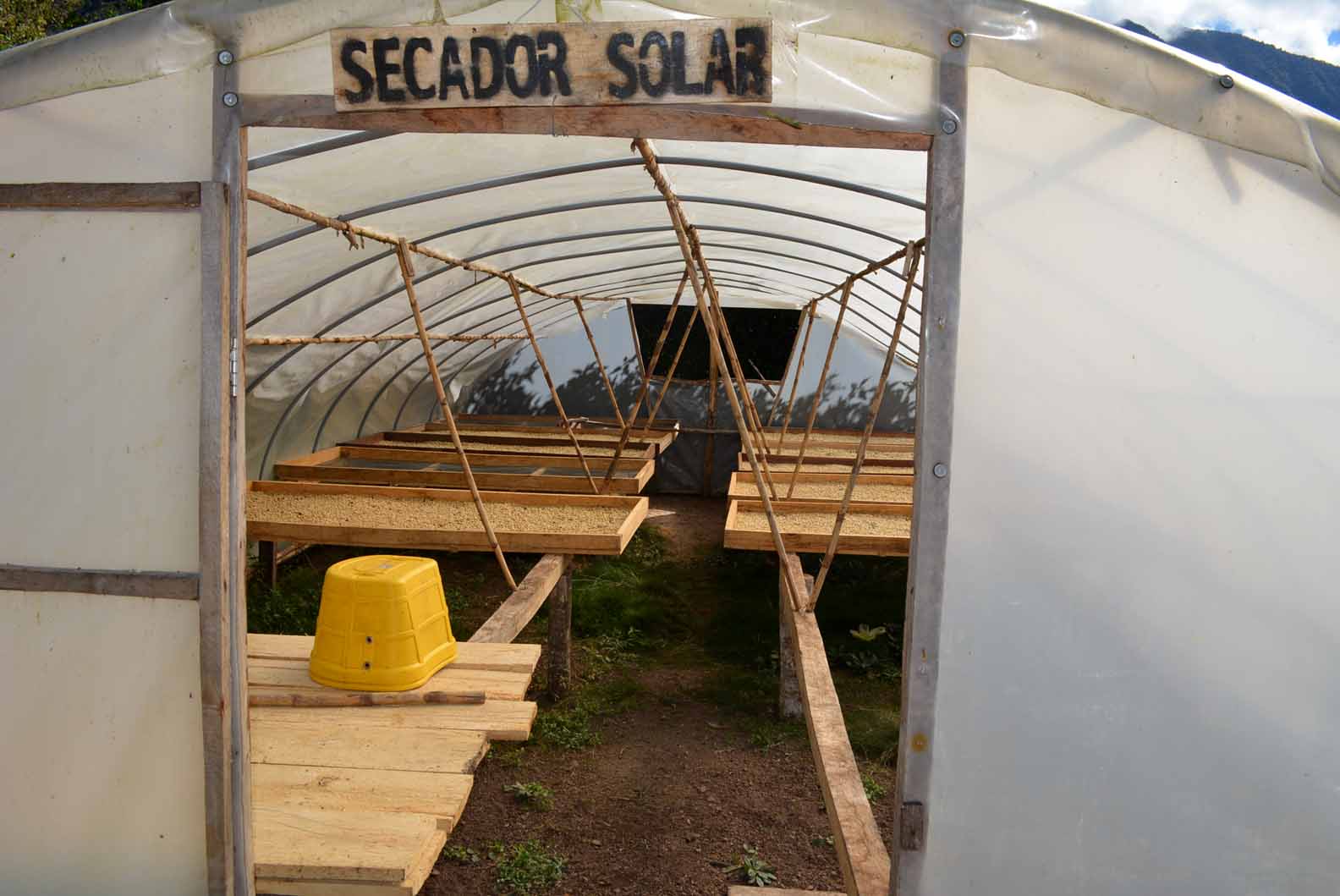


Curibamba Project Results Promising
This is the third year of the Curibamba Coffee Project, and the results are encouraging. Most SCAA cupping scores (a scale to rate specialty coffees) were in the 81-82.5 range last year, which is good, but in the competitive specialty coffee market, a bit low.
This year, most of the coffees are over 83, and some as high as 84.5, a considerable improvement for just one year. The price that the grower can obtain for this better coffee is nearly double what the local coffee buyers are paying, so it’s a much more profitable & economically viable model for the farmers although the work is somewhat more involved at first.
Some of this coffee will be presented at Expo Milano 2015 in Milan, Italy later this year. It’s a proud moment for the growers. I can tell that they’re excited to see their coffee for sale in the US also. It’s good to see familiar faces, and we really feel a part of things this year.

Coming Soon to Your Cup
We purchased quite a few micro lots of Curibamba coffee this year and will be offering it in September. In an upcoming article we’ll show you the process parchment coffee takes to get to your cup.
Your coffee purchases help support small family coffee farmers. Thanks!
©2015 Ben Gangloff
You might also like:
Curibamba Workshops, A Conversation with Ignacio Medina
Real People, Really Good Coffee – David Torres Bisetti
Peru Ranked Third for Adventure Tourism, Here’s Why
Why the Peruvian Economy Matters to the World
US Chocolate Made with Peruvian Cocoa Wins Awards
Did you enjoy this page? Have questions? Would like information on something to be posted here? Please drop us a line, or sign up for our email list in the box to the right.
